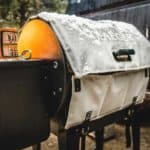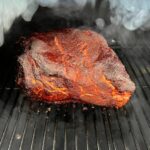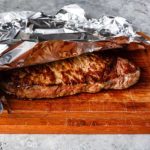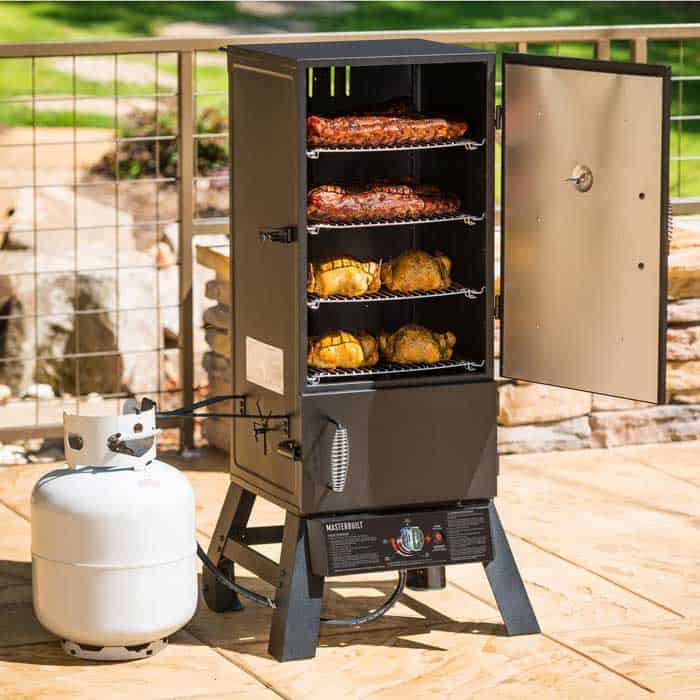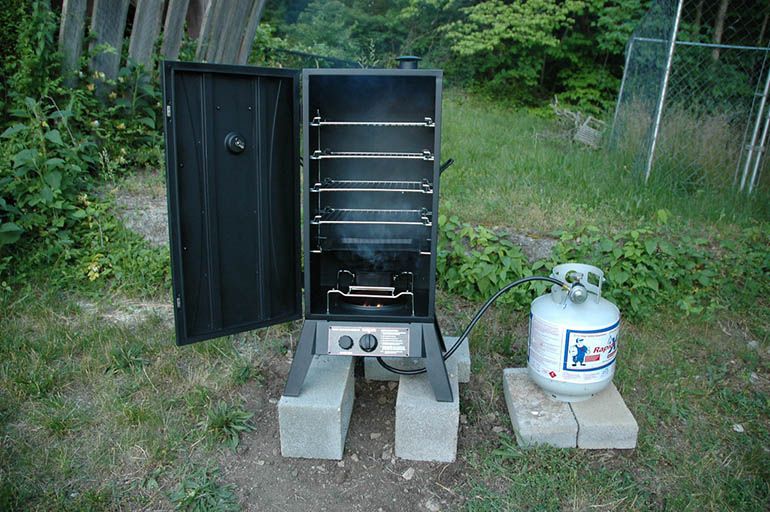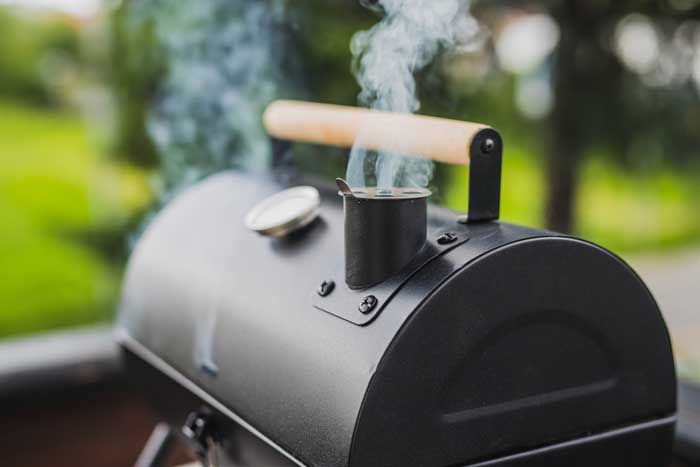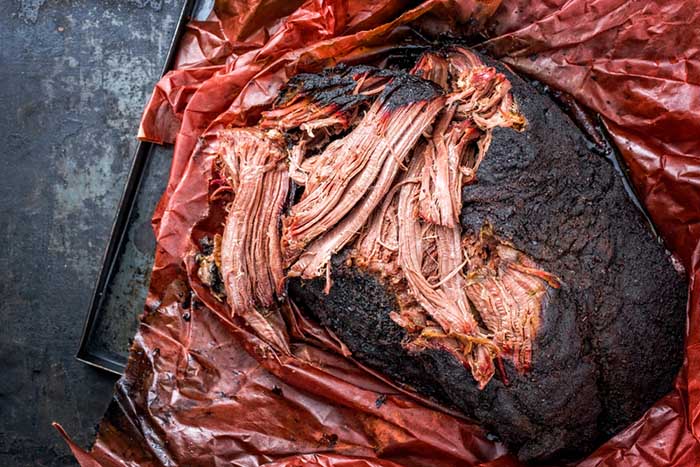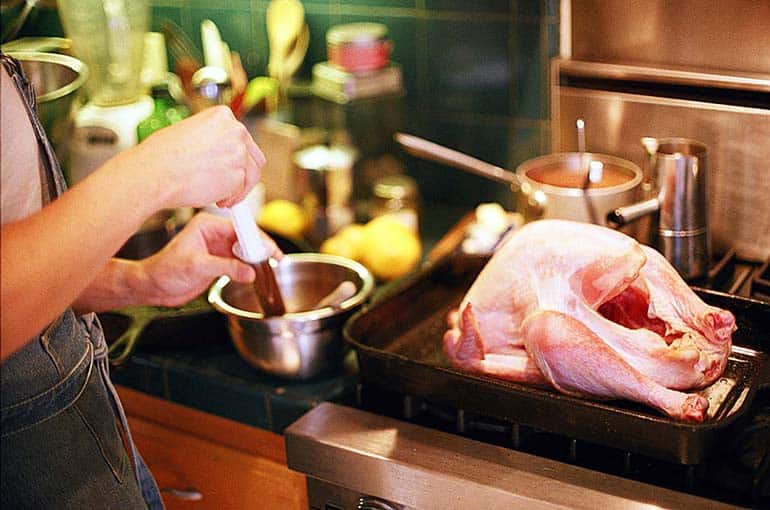Creosote is the bitter residue and black oily coating on grilled and smoked meat. Discover what creosote is and how to prevent it in your pellet or charcoal grill and smoker with our easy barbecue guide.
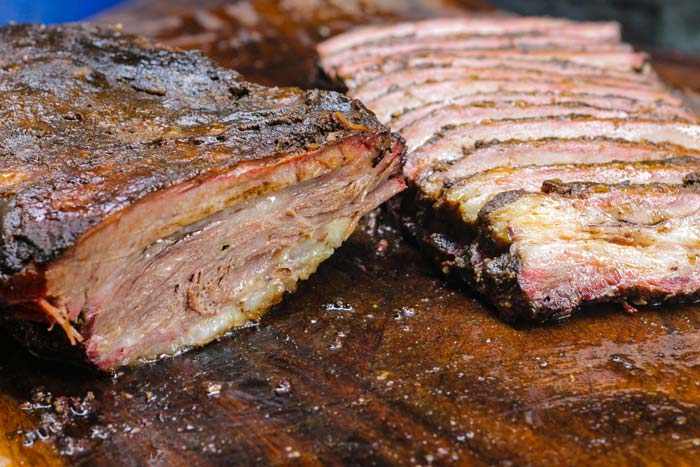
When using your smoker, there’s nothing worse than pulling out oily, blackened meat that leaves you with a bitter taste in your mouth and a pain in your stomach.
What is this sticky tar-like stuff, where did it come from, and what did it do to your meat? It’s called creosote. And it’s not good for the taste buds or digestive system.
In a low oxygen environment of heavy, dense, and dark smoke, smoldering wood produces creosote. Unfortunately, creosote can coat and blacken the inside of your smoker, including your meat.
Discover everything you need to know to prevent and get rid of creosote so you can smoke and grill without ending up with a black oily coating on your meat.
What is Creosote?
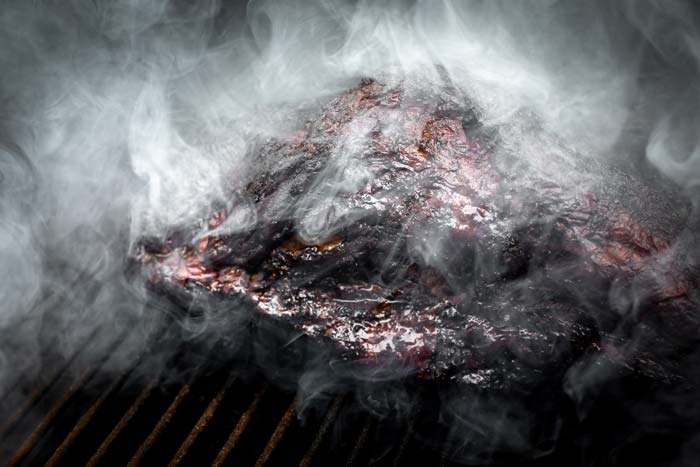
Creosote is an oily tar-like carbon residue produced when wood heats to the point of making smoke, and the smoke condensates rather than combust.
Wood vaporizes at high temperatures (like in your smoker). When these vapors combust, you get a flame and the vapor that doesn’t burn forms smoke. If the smoke contacts a cool surface, it condenses, resulting in creosote.
While this definition sounds better suited for a science report than an article about smoking meat, a little understanding of the science can help keep your smoker and food creosote-free. The surface of smoked meats is ruined once the chemical reaction that causes the formation of creosote occurs.
So what’s in creosote? According to the CDC, it’s a mixture of hundreds of chemicals. The primary chemicals in wood creosote are Cresols, Phenol, and Guaiacol. While some of these chemicals occur naturally, others are artificial. And none sound like anything you want to eat.
As for the taste, most people dislike the strong taste of creosote. Some describe it as having a bitter turpentine taste (if you’ve ever tasted turpentine). It leaves an oily after-taste in your mouth and sometimes a tingling, numbing sensation on your tongue.
Why Does Creosote Make Meat Bitter?
As creosote forms during burning wood or charcoal, if it cannot quickly exit the smoker with the smoke, that oily substance begins to coat the inside of your smoker. That includes anything in it, including your meat.
You’re essentially cooking carbon and soot (chemicals and toxins) directly onto the meat. Is it any surprise that it results in a bitter taste?
Is Creosote Toxic?
According to the EPA, creosote is used as a wood preservative and pesticide, among other things. While the wood used for grilling and smoking is typically much cleaner (fewer chemicals) than woods used for building materials and even to heat your home, you can see why you wouldn’t want to consume too much creosote.
In large quantities, creosote is toxic. While most creosote exposure does not come from eating it, people who consume too much creosote report stomach pain, a burning of the mouth and throat, and even dizziness.
How to Test Your Smoker for Creosote
You can end up with creosote-coated meats in one of two ways:
- You don’t have the right combination of heat, fuel, and oxygen when you smoke
- You neglect to clean creosote residue from the inside of your smoker before use
So how can you tell if your smoker is coating your beautiful brisket with creosote?
Remember that smoke condenses and forms creosote when it contacts a cool surface. Let the smoke coming from your smoker’s vents surround an ice-cold glass of water for a few minutes. Do you see any black specks sticking to the glass? That is creosote.
Another way to tell if your smoker might be creating creosote is to monitor your smoke’s color, velocity, and smell. The following are tell-tale signs of creosote:
- Dark gray smoke and heavy white smoke
- Smoke that hangs in the air rather than rises
- Smoke that smells bitter
How to Prevent Creosote in Your Smoker or Grill
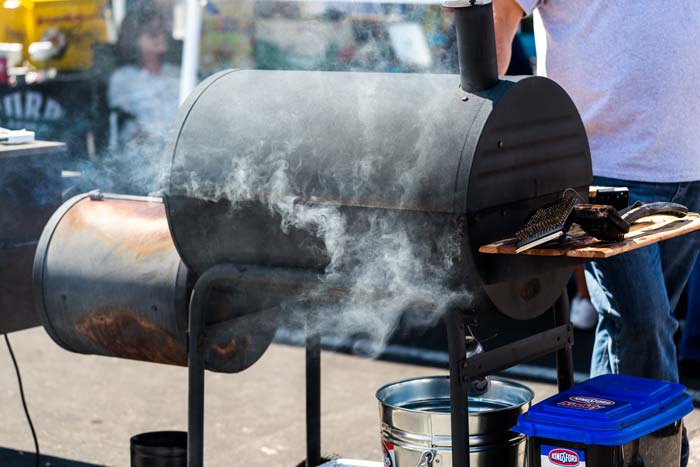
While you need to know how to effectively clean creosote from the inside of your smoker, preventing creosote build-up will minimize the amount of cleaning you’ll have to do after each use.
Keep Your Smoker Clean
You always want to start with a clean smoker. Creosote build-up might seem as if it permanently burned onto the inside of your smoker, but once it heats up, it will begin flaking off and coating your food.
The easiest time to clean your smoker is right after you use it, before any creosote build-up has a chance to harden.
Wrap Meat in Foil
If you do find it necessary to smoke in a creosote-coated smoker, or if you have not quite mastered creosote-free smoking, wrap your meat in foil. If you detect creosote formation during the smoking process, you can cover the meat in foil to protect it during the remaining smoking time.
Fully Open Vents
A low-oxygen smoking environment typically results in creosote. You might be tempted to reduce ventilation to preserve the smoker’s temperature, but you need to open your charcoal grill’s vents to allow more oxygen in if you want to avoid creosote build-up.
Limit the Use of Wood Chips
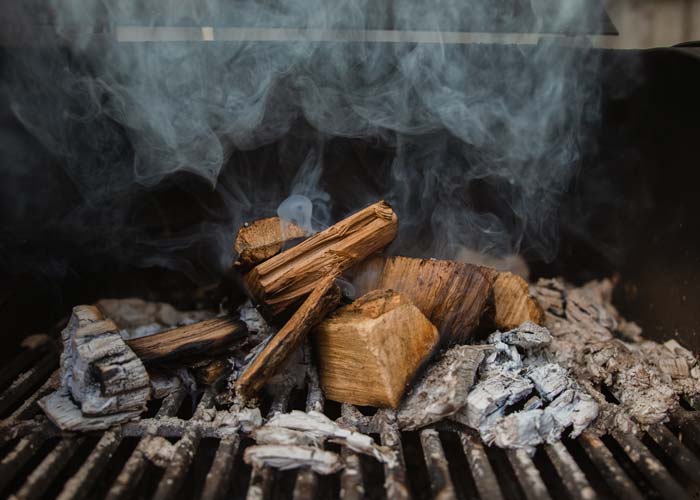
A fire with sufficient ventilation that burns clean will reduce the amount of smoke that leads to creosote build-up. Using too many wood chips will often produce smoldering smoke that you don’t want.
As previously mentioned, you want to avoid dark grey smoke and heavy white smoke. Back off on the wood chips if your smoke becomes too dense.
FAQ
Does Burning Charcoal Produce Creosote?
Charcoal is produced by burning wood in a low-oxygen environment to form char. It sounds similar to how creosote forms in your smoker, doesn’t it?
Some charcoals contain creosote from the manufacturing process. Good charcoal results in a pure carbon char with little creosote residue. However, even when using high-quality charcoal, if you allow your smoking environment to become oxygen-poor and high heat, you will end up with creosote.
Does Hardwood Create Creosote?
Like charcoal, burning hardwood at high heat without enough ventilation can cause heavy smoke leading to creosote. That said, hardwoods are preferable to softwoods for smoking since they contain less sap, contributing to creosote formation. But controlling combustion within your smoking environment is more critical in preventing creosote than the type of wood used.
If you master creating the perfect balance of heat, fuel, and oxygen in your smoker, you don’t have to worry about what fuel source you are using.
How Do You Clean Creosote from a Smoker?
You have a few options for cleaning the creosote from your smoker.
If the creosote is ‘cooked on’, you can burn it off with a propane torch. The creosote will turn to ash, and you can wipe the surfaces clean with a damp cloth.
If you don’t have a torch, you may be able to loosen hardened creosote with a hose and then scrape it loose.
If the creosote has not yet hardened after using your smoker, you can scrape the creosote off with a wire brush or scraper. Once again, use a damp cloth to wipe away any remaining residue.
Unless you prefer to stay away from chemicals, oven cleaner will remove creosote.
After removing creosote build-up, you should re-season your smoker. Re-seasoning will remove any remaining traces of creosote.

